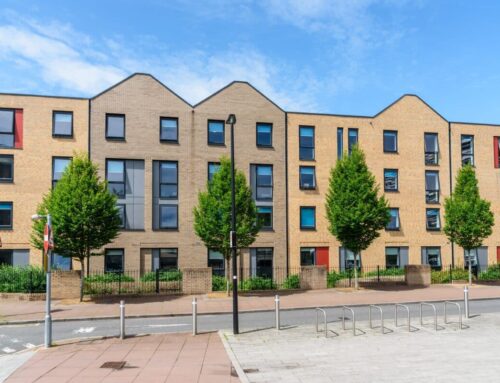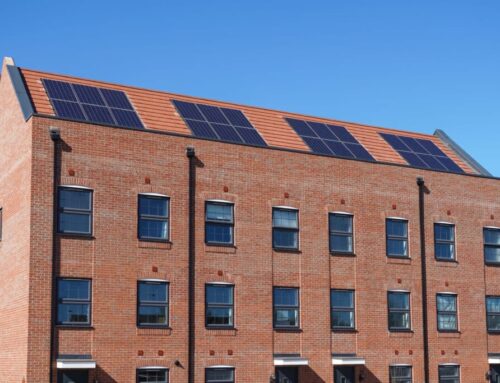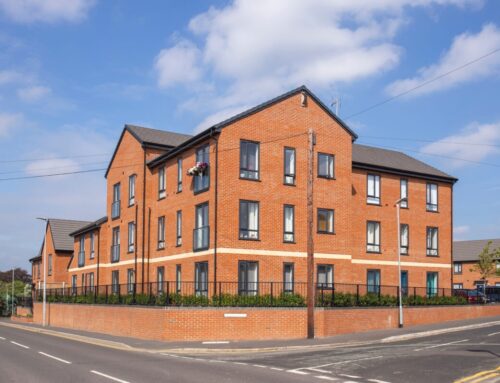Block in a Box provides a range of services and solutions for those that self-manage their blocks of flats.
Taking on the responsibility of buying and owning a listed building can be understandably daunting, but listed properties can also make fantastic investments.
They are often very beautiful, steeped in history and can be a desirable residence for affluent leaseholders if converted into apartments.
However, for all the pros, there are a few things to be aware of when purchasing a listed property and we’d like to give you a heads up on some key points below.
What Does Being ‘Listed’ Mean?
It’s as literal as it sounds- being listed means that the building is on an actual list held by Historic England called ‘The National Heritage List for England’ (NHLE).
The list is around 400,000 entries long and includes scheduled monuments, listed buildings, registered landscapes and battlefields as well as protected wrecks.
Buildings deemed appropriate for the List also graded based on the NHLE’s judgement of their importance. Your property may be Grade I or Grade II* but is most likely Grade II as these buildings make up the majority of the List (around 92%). They are buildings of ‘special interest’ that warrant preservation and most domestic listed buildings fall into this category.
How do I Know if My Building is Listed?
If you’re buying through an agency then you’ll most likely be made aware before you even view the property. Being listed is viewed as a selling point so the grade of the building will probably be mentioned within the first few sentences of the advert!
However, if you’re interested in a property that’s not openly on the market through an agency and want to know its status then you can head to the Historic England website and use their search function where you can search the entire list by keyword or by postcode. The map search function can be even better when it comes to pinpointing the grade of the building.
If you want any extra reassurance, Historic England are happy to be contacted via email (heritagelistenquiries@historicengland.org.uk) or you can also contact your local authority for clarification.
Knowing What the Listing Covers
Not all listed buildings are protected as a whole. If the Historic England listing doesn’t mention any particulars, then yes, the protection extends to the building in its entirety (including the interior). However, in some cases, parts of the building may be excluded from the listing and these will be specifically detailed.
It’s also important to note that the listing can also extend to:
- Other attached structures and fixtures
- More recent extensions or additions
- Any pre-1948 buildings on the land attached to the building (described as ‘curtilage’ within the planning system).
Because all listed buildings are unique, what is actually covered by a listing can vary quite widely- Historic England advise that you check all details with your local authority before making a purchase.
How Does Listing Affect Owners?
There are a few considerations to be aware of when it comes to buying listed properties:
Alterations
Historic England says “If you want to alter or extend a listed building in a way that affects its character or appearance as a building of special architectural or historic interest, or even demolish it, you must first apply for listed building consent from your local planning authority.”
They advise that owners of listed buildings speak to their Local Authority Conservation Officer about any plans they have for alterations before any financial outlay is made and certainly before any work commences. The Officer should be able to advise if the plans are likely to achieve consent or not- a step that could save time, heartache and money. They may be able to advise tweaks to your plan that would make the request more likely to be accepted too.
You can download an application form for Listed Building Consent for your local authority’s website and there is free guidance available on the Government’s Planning Portal website.
Repairs
Listed buildings can’t simply be repaired to modern standards. While repairs may have to comply with modern Building Regulations, original materials and methods must be used wherever possible and the overall original look of the property must be maintained.
As you can imagine, repairs of this nature require specialists and rare materials- both of which can be very costly.
A fully comprehensive survey is an absolute must when buying a Listed property; to avoid any nasty surprises and to also give you the opportunity to negotiate on price if works are needed.
Historic England do run a grant scheme to help with the cost of repairs to listed properties- you can find out more about that here.
Insurance
While there’s no legal requirement to maintain appropriate insurance for a listed building or a building in a conservation area, legislation does impose various duties on the owner when it comes to repair and maintenance, making adequate insurance an absolute must.
Going through an experienced, specialist broker is most likely the best way to avoid issues such as under-insurance (due to higher-than-average rebuild costs), sub-par loss adjusters (who are chosen and paid by your insurer) and lack of coverage for unexpected costs (which can pile up when claiming for listed properties).
Specialist cover can also make the process of restoration or repairs easier due to insurers’ little black book of expert craftsman. They may also be more adept at working with affluent residents- something to keep in mind if your property will be occupied by leaseholders.
Head to the Block in a Box website for the services we provide such as Manage Your Block and more about Block in a Box– services and solutions specifically designed to make the lives of RMC directors simpler and easier.







Leave A Comment